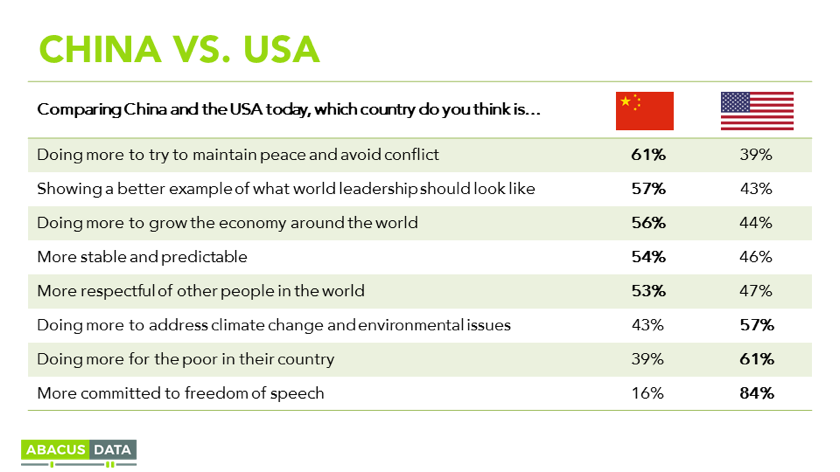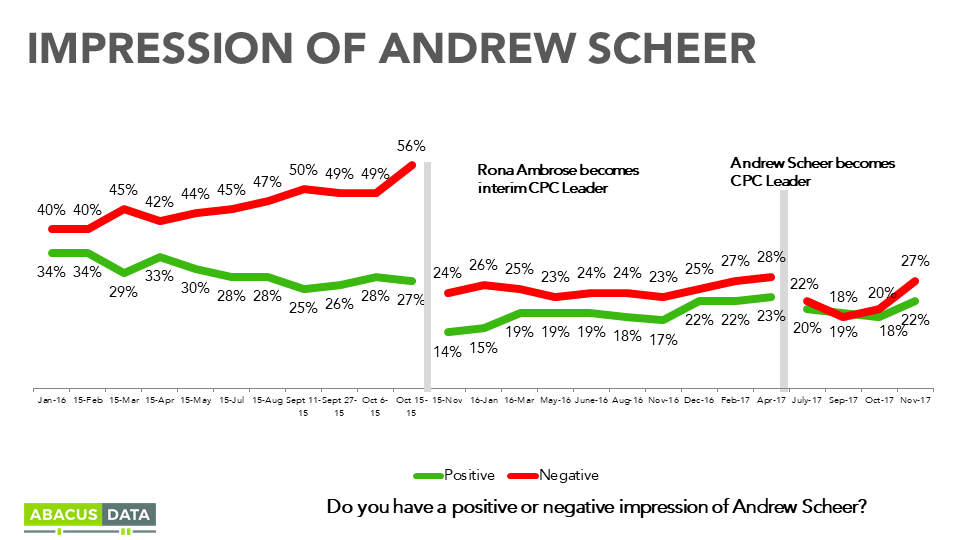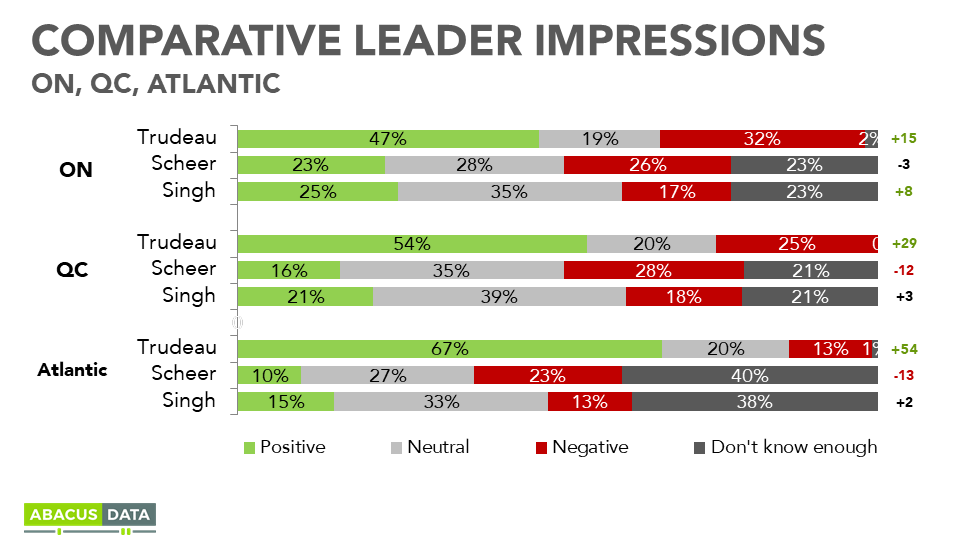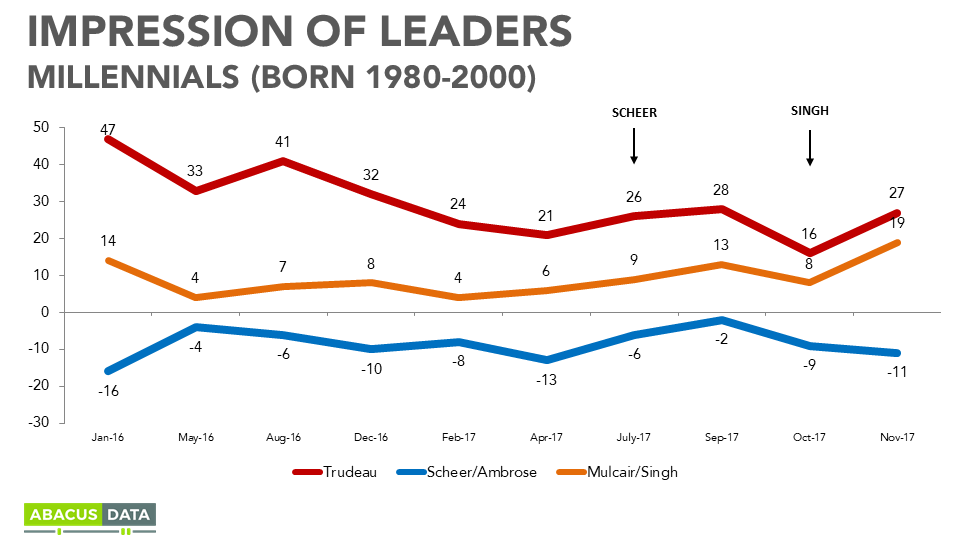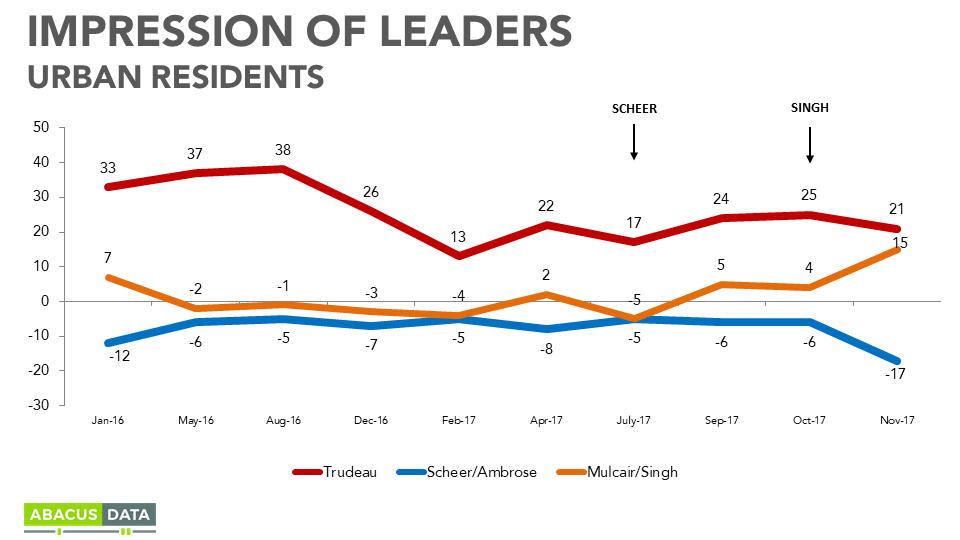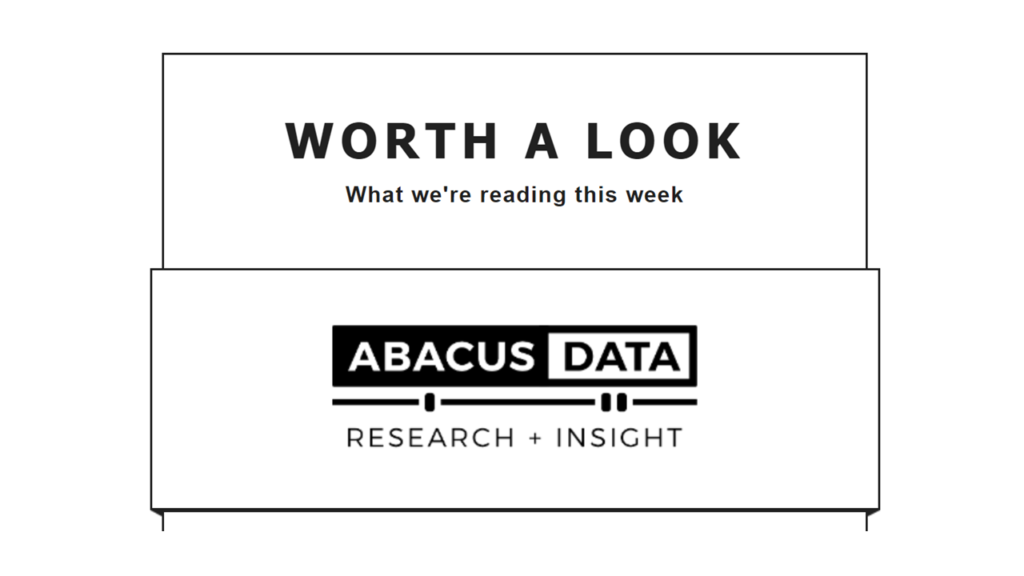NL residents recognize dire circumstances in province; Want political leadership.
Half of NL residents think the province is likely to go bankrupt in the new few years. Most are looking for political leadership to solve the crisis.
There’s a clear sense that something must change or else the outcome will be catastrophic for Newfoundland and Labrador.
That’s the message we heard in a recent survey Abacus Data conducted in Newfoundland and Labrador that explored how residents feel about the future of their province, the challenges it faces today, and the political will needed to turn things around.
The level of anxiety is quite elevated across the province. Almost half feel that life in the province has become worse over the last 10 years, about half describe things in the province as pretty bad or horrible, and only one in four residents are optimistic that things will get better over the next 10 years.

So, what’s driving this anxiousness?
When we ask residents to identify the most important issue facing the province today, a few issues are mentioned more than others. Muskrat Falls, provincial debt, jobs, the economy, cost of living, taxes, and healthcare are mentioned by large numbers of people.

When we ask residents to diagnosis the problems facing Newfoundland and Labrador, majorities point to the provincial deficit and finances, future opportunities for young people in the province, and the cost of living as “very big problems”. In fact, except for the quality of schools, at least three in ten residents felt that all issues were very big problems.

And what’s striking about the results is the level of consensus across different regions, age groups, and partisan leanings. For example, while 62% of NL residents felt the provincial budget deficit and finances were a very big problem for the province – that view was shared most of all by those who voted NDP in 2015 (79%) but was the majority view among PC (64%) and Liberal (57%) voters.
Not surprisingly, younger residents were more likely to feel that the availability of good paying jobs was a very big problem while older residents were more inclined to feel the budget deficit was a very big problem.
PERCEPTIONS ABOUT PROVINCIAL FINANCES
Recently, there were news reports that found the province was on the brink of not being able to pay government employees in 2016. Almost half of residents were aware of this news.
Most striking of all though is that a majority of Newfoundland and Labrador residents think it is likely that the province will go bankrupt in the new few years with 22% thinking it is either very or extremely likely to happen.

And this alarm is not isolated to opposition party supporters. In fact, PC Party voters were the least likely to think the province was likely to go bankrupt (40%) while NDP (65%) and Liberal Party (52%) were more likely to think provincial bankruptcy was likely to happen.
There was more concern among younger residents (those under 45) with 64% feeling the province was likely to go bankrupt.

Next, we asked respondents what would likely happen if the province was on the brink of bankruptcy. Most felt that there would have to be major spending cuts and provincial taxes would have to increase a lot. A majority also felt that the province would find more money to borrow but at very high-interest rates.
Perhaps most interesting was opinions about the likelihood of a federal government bailout of the province. Province-wide 37% felt a bailout was likely compared with 29% who felt it was unlikely to happen. 35% were unsure whether a federal bailout would likely happen or not.

Older residents were more likely to think a bailout was likely than younger residents, while NDP voters (43%) were more likely than Liberal voters (39%) to think it was likely to happen.

NEWFOUNDLAND AND LABRADOR IN THE NEXT 20 YEARS
Later in the survey, we asked respondents whether they thought several things should happen and whether those same outcomes are likely to happen.
Overall, we found that people generally want the province to become a tourism leader, they want the fishery to be reformed, they want the province to be a great place to do business and for young people to come establish themselves and they want a balanced budget. Fewer say they want the province to become less dependent on the oil and gas sector although a clear majority (69%) think it definitely or probably should happen in the next 20 years.

But when we ask whether they think these same things will happen, few are optimistic, especially when it comes to balancing the budget and positioning the province as a good place to do business. Most residents feel that the province will be a tourism leader known for great food and cultural experiences but only a minority feel that it will be a good place to do business, to raise a family or work, or attractive to people from around the world. And perhaps most striking is the fact that 78% think that the province will not have a balanced budget in the next 20 years.

Given these challenges and the mood of the province, it should not come as a surprise that 71% of residents feel that things in the province are so bad that they “really have to consider new ways of doing things in the province.” Only a minority are of the view that “people exaggerate the challenges facing Newfoundland and Labrador.”

POLITICAL ENVIRONMENT
The level of anxiety about the province carries over into uncertainty over who should lead it.
When asked how they would vote if a provincial election was held at the time of the survey, almost half of respondents reported being undecided (48%) with 22% saying they would vote Liberal, 18% voting PC, and 12% voting NDP.

These results suggest a highly volatile political environment. Consider that half of past Liberal and NDP supporters say they are undecided about which party they would vote for. 57% of women are undecided (almost 20 points higher than men).

With those undecideds removed, the ballot would be Liberal 41%, PC 34%, and NDP 23%.

UPSHOT
“The public diagnosis of Newfoundland and Labrador’s looming fiscal crisis is clear and broad. So much so that half the public believes that the province is likely to go bankrupt in the next few years and over 70% feel the problems are so severe that they are willing to accept new ways of solving the problem. The public is craving political leadership willing to tackle this unfolding crisis and it appears most of the public is willing to take the bad medicine that will come with curing what ails the province.”
METHODOLOGY
Our survey was conducted online with 600 Newfoundland and Labrador adults conducted between January 8 and 15, 2018. A random sample of panelists was invited to complete the survey from a large representative panel of over 500,000 Canadians.
The Marketing Research and Intelligence Association policy limits statements about margins of sampling error for most online surveys. The margin of error for a comparable probability-based random sample of 600 is +/- 4.1%, 19 times out of 20.
The data were weighted according to census data to ensure that the sample matched Newfoundland and Labrador’s population according to age, gender, educational attainment, and region. Totals may not add up to 100 due to rounding.
ABACUS DATA INC.
We offer global research capacity with a strong focus on customer service, attention to detail and value-added insight. Our team combines the experience of our Chairman Bruce Anderson, one of Canada’s leading research executives for two decades, with the energy, creativity and research expertise of CEO David Coletto, Ph.D.















